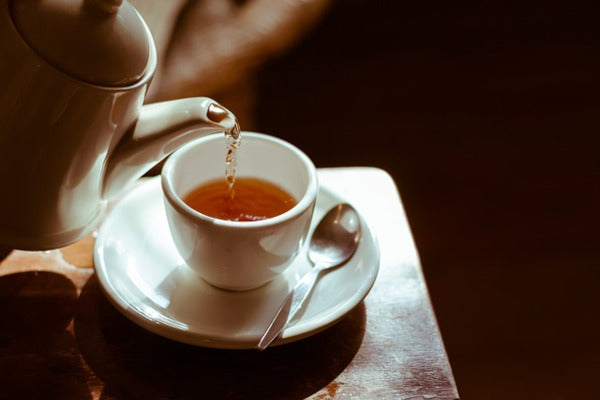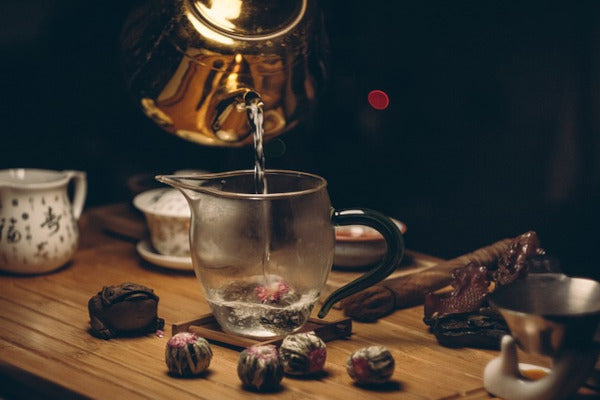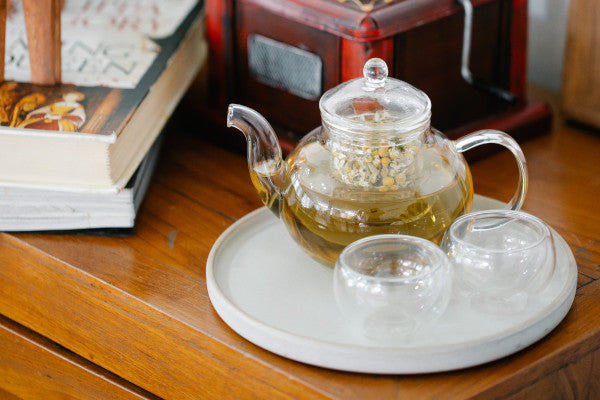Matcha tea is a fine powder made from ground green tea , used in the Japanese tea ceremony. It has an intense green color and a tasty, sweet, and slightly acidic flavor depending on the harvest. It also contains a high amount of catechins, carotene, and vitamins A, B, C, and E.
The tea used for matcha green tea is called Tencha and is produced from tea plants that are shaded for at least four weeks before harvesting, as this creates an extremely delicate tea with dark green leaves.
After harvesting, the tea leaves are steamed, dried, and then the coarse leaves are ground in stone mills into a fine powder.
Matcha is considered a high-end tea, particularly elegant and considerably more expensive than other varieties. To protect its valuable ingredients, the tea should be tightly sealed after first opening and stored in a cool, dry place.
The history of Matcha
The preparation method for Matcha was probably developed in the 6th century in China and, as is common in traditional East Asian medicine, the tea leaves are dried as a medicinal plant and ground into a fine powder.
This medicine has traditionally been made in Buddhist monasteries. While Matcha was gradually forgotten in China, it was further perfected in Japan within the context of Buddhism. Under the great Japanese tea master Sen no Rikyu, the Japanese tea ceremony flourished in the 16th century. Sen Rikyu explains in his poems how to properly drink and prepare Matcha tea.
The production of Matcha
Matcha green tea is produced primarily in Japan and China. Matcha is made from fully shaded leaves, meaning the leaves are covered before harvesting with light-impermeable nets to enhance their quality.
The tea is steamed, dried, and broken so that the stems and veins are separated from the leaves, and then separated from each other with a fan.
For Matcha only the fine leaf tissue is used, this produces the famous Tencha , which is then granite ground, in order to achieve the finest particle size and thus produce about 30 grams of Matcha powder, traditional granite stone mills require an hour to do this.
Different uses of Matcha Green Tea
Matcha as Tea: High-quality Matcha (tea ceremony quality) is prepared as a hot drink by placing approximately 1 gram of matcha tea in a cup (Matcha tea pot or similar container), pouring it over hot 80-degree water, and frothing it with a bamboo whisk (chasen).
Matcha as an ingredient: Matcha functions as an ingredient in a wide variety of foods and beverages. Matcha has been an integral part of Japanese cuisine, and classic examples include the use of matcha in milkshakes and drinks such as smoothies, matcha yogurt, ice cream, or matcha chocolate. It is also used as an ingredient in sorbets, macaroons, cookies, and brownies.
Matcha blended with other teas: Matcha is also used to refine other types of tea, and traditionally this is done with three teas: Sencha, Genmaicha, and Kukicha. In the case of Matcha Sencha-iri, a little Matcha is added, making the green color of this tea more intense than that of conventional Sencha. Matcha-iri Kukicha is a stem tea (Kukicha) blended with a little Matcha. The result is a dark green tea with an intensely sweet flavor. Matcha-iri Genmaicha consists of roasted rice (Genmaicha), Sencha, and a little Matcha tea.
How to prepare Matcha green tea
Place 1 to 2 grams of matcha powder in a bowl, sprinkle with 60 to 100 ml of hot water, and mix with a bamboo whisk, called a cha-sen, whisking until foamy. The water should be around 80°C (176°F) and not too hard. Depending on your taste, you can make a milder or stronger matcha green tea by adding more matcha green tea powder.
The quality differences of Matcha
Green tea rapidly loses its quality through oxidation and contact with oxygen and should be consumed as soon as possible, as refrigerated storage and airtight packaging can prolong the tea's shelf life.
Further differences in taste result from the time of harvest; like leaf tea, tea from earlier harvests is generally more aromatic, intense, and less bitter in taste.
The taste of true, high-quality Matcha is called umami, which means the fifth sense of taste. The name Matcha roughly translates to "powdered green tea."
If you would like to taste this and other special organic teas , please visit our Tétique online store .






